Can an Acne Face Map Help You Better Treat Your Breakouts?
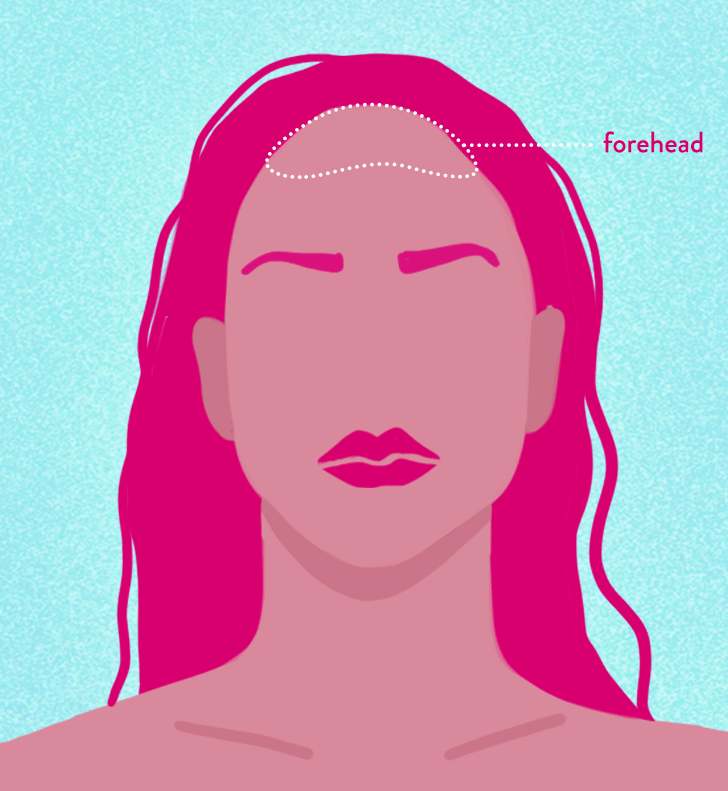
I remember when I first started breaking out at the wee age of 12. At the time, I was confused by the constellation of bumps that had sprouted on my forehead, and you better believe I used every stinging Stridex wipe and Clearasil treatment I could get my little hands on in hopes of flattening them. (In hindsight, it would have been far more effective to just lay off the gel I was using to shellac my baby hairs down.)
When I hit high school, the acne had worsened—spreading from my forehead down to my cheeks and chin. I avoided bright lights and hid behind my hair a lot my sophomore and junior years, and finally found salvation when I went on birth control. This was before Reddit threads and Instagram access to derms, so I took it upon myself to become a little skincare detective, and that’s when I came across “face mapping” for the first time.
What is face mapping?
Here’s the Cliff’s notes version of face mapping: It’s the ancient practice of diagnosing the causes of acne, so to speak, based on where the breakouts are happening and using that as a guide (or map) to determine the best treatment. Or as Dr. Rachel Nazarian, a board-certified dermatologist at Schweiger Dermatology Group in New York better explains: “Eastern medicine attributes acne on various parts of the face to specific organs that are thought to be ‘linked’ to each area, and depending on where you’re breaking out, any treatment should be directed at correcting underlying problems with the specific organ.”
So why isn’t everyone using face maps to treat their acne?
“Face mapping is not a standard practice of Western medicine. Because acne is nearly always multifactorial, we don’t usually treat solely based on location,” says Nazarian. “If a patient states she breaks out every month around her menstrual cycle, it doesn’t matter where the breakouts are so much as the type of acne lesion itself (i.e. deep cystic red pimples vs blackheads vs whiteheads).”
“There are other skin conditions that may mimic acne on the face—like rosacea around the nose and mouth or lupus on the cheeks. This may be where the tradition of facial mapping originated, as these tend to be more standard systemic medical conditions that consistently cause breakouts on certain areas of the face,” says Nazarian.
Dr. Jennifer Chwalek, a board-certified dermatologist at Union Square Laser Dermatology agrees, adding that, “There is little empirical evidence that face mapping accurately provides a direct correlation between one organ and one specific area of the face. Where I see the value in this concept are the links between the organs and the skin, in general. The skin is a window into internal health and can often be a smoking gun."
“For example, many patients who experience cystic acne are actually going through hormonal imbalances, such as polycystic ovary syndrome, where the body produces excess androgen. Or patients with rosacea often find out they have a bacterial imbalance of the gut or intestinal issues,” explains Chwalek. “As a dermatologist, it’s important to look at the fuller picture of a patient's health in order to properly address their skin concerns. We need to be extremely thorough and discuss everything from diet to lifestyle to other diagnoses before diving into recommended treatments. It is a 360-degree approach.”
All of this to say that acne is complicated. For many people, finding the culprit for their breakouts can’t simply be boiled down to one factor. However, if you’re finding that your breakouts are always appearing at the same (ahem) spot, we’ve put together a derm-approved face map to help you troubleshoot your skin as a starting guide.
Note: If, after a few weeks, you don’t see an improvement with the over-the-counter options below, see a board-certified dermatologist for a thorough evaluation and tailored regimen.
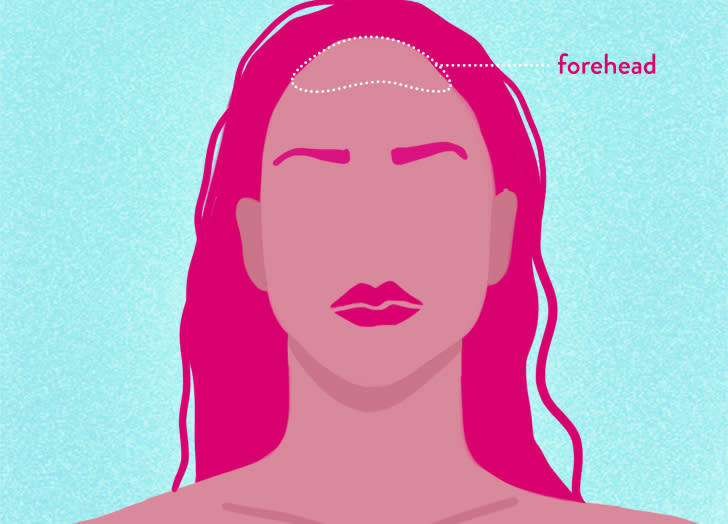
If you’re breaking out on your forehead
“Acne here is often caused by hair products and sweat gland occlusion—especially during humid and hot weather,” explains Nazarian. “I often recommend a topical product with salicylic acid to penetrate the oil glands and help unblock pores. Salicylic acid breaks up the keratin plugs and dead skin cells that can accumulate and cause breakouts.”
Your MVPs: The Ordinary AHA 30% + BHA 2% Peeling Solution ($8); The Inkey List Salicylic Acid Acne + Pore Cleanser ($10); La Roche Posay Effaclar Duo ($20)
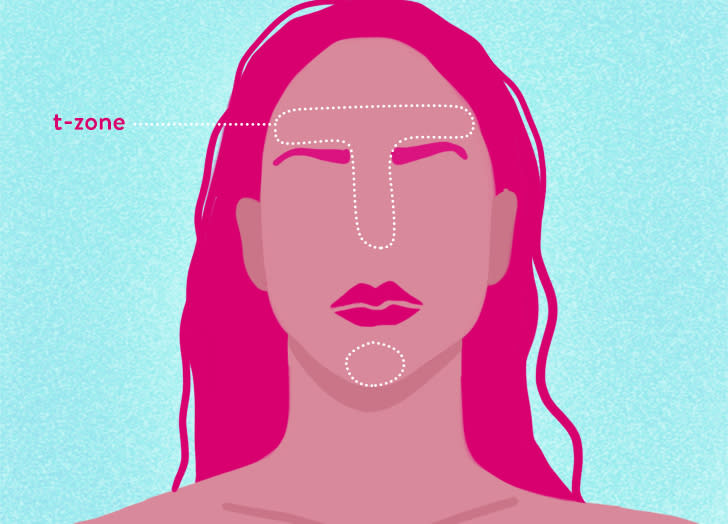
If you’re breaking out along your T-zone
“Acne here usually shows up as whiteheads or blackheads and is due to sebaceous gland activity that fluctuates daily with hormones, as well as environmental factors like temperature and humidity,” says Dr. Rita Linkner of Spring Street Dermatology in New York City. “I recommend a product with alpha hydroxy acids to penetrate deeply in the skin to unclog congestion.”
Your MVPs: Rodan and Fields Unblemish Clarifying Toner ($43); Biossance Squalane + Glycolic Renewal Mask ($68); Dr. Dennis Gross Skincare Alpha Beta Extra Strength Daily Peel ($88)
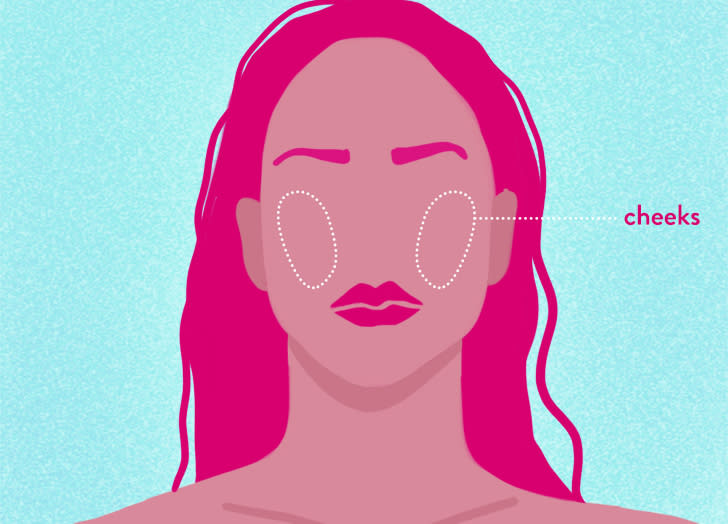
If you’re breaking out on your cheeks
“This area tends to dry out easily, so you’ve got to be gentle when treating acne here. I prefer using a mild glycolic exfoliating wash to decrease acne production,” says Nazarian.
Your MVPs: Glytone Mild Gel Cleanser ($33); SkinCeuticals Glycolic Renewal Gel Cleanser ($38)
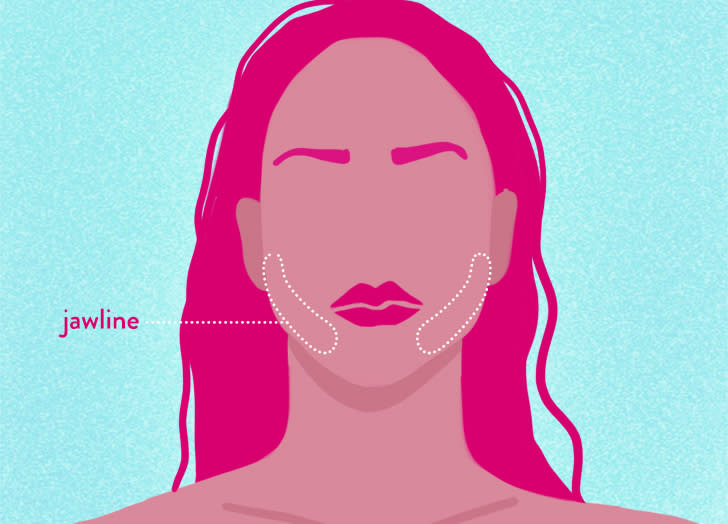
If you’re breaking out along your jawline
“I find this to be one of the most challenging areas to treat. Many people find that this is where they break-out around their hormonal fluctuations each month. Regardless of the exact etiology, I recommend a gentle leave-on mask that contains benzoyl peroxide,” says Nazarian.
Linker seconds this ingredient: “Benzoyl peroxide has strong anti-inflammatory properties to attack pimples that erupt above the skin's surface and cause pain. It can be used preventatively as well.”
Your MVPs: Neutrogena Rapid Clear Stubborn Acne Daily Leave-On Mask ($12); Rodan + Fields’ Spotless Acne Clearing Treatment ($78)

